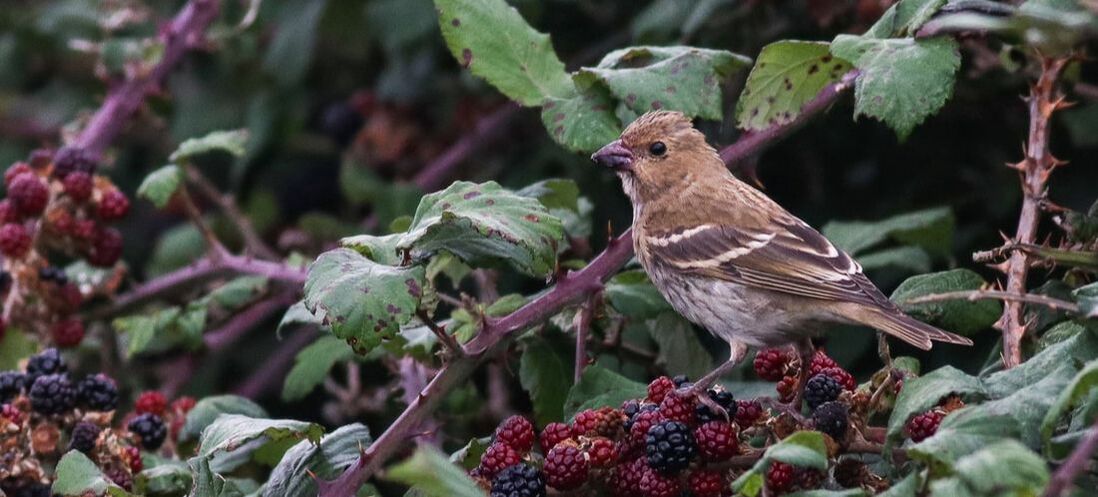|
October has arrived with a blow. A few Swallows are still heading south, including four at RSPB Conwy today, but Redwings are arriving in the hills and along the coast. Yellow-browed Warblers have been at the outer edges of North Wales, this Siberian waif found at RSPB Burton Mere Wetlands on the Dee estuary, RSPB South Stack and on Bardsey, which also produced a Common Rosefinch and a Barred Warbler. A Firecrest ringed at Rhostryfan is likely to be another arrival from Scandinavia. Autumnal weather hasn’t persuaded the long-staying juvenile Osprey to move on from Aber Ogwen, now present for its fourth week.
Whooper Swans are making landfall from Iceland, with small numbers along the north coast and one family dropping onto Alwen Reservoir, on Mynydd Hiraethog. A Red-breasted Goose on the Dwyryd estuary is associating with Canada Geese, so probably one of several from a domestic origin that wander widely, rather than a genuine arrival from Arctic Russia. Also from northern latitudes was a Lapland Bunting at RSPB South Stack on Monday, along with a remarkable flock of 37 Ravens. A few passage waders remain in the region, including 63 Black-tailed Godwits with a Little Gull on Porthmadog’s Llyn Bach. Curlew Sandpipers numbered eight on the Cefni estuary, with singles on Anglesey’s Inland Sea, Valley, Morfa Madryn, Foryd Bay and Clwyd estuary. Five were with a Little Stint at RSPB Conwy, where diggers are reprofiling the lagoons for wildlife and for visiting watchers. Strong winds brought globally threatened Balearic Shearwaters to Rhos Point and Cemlyn. Several more passed Bardsey last week, with Sooty Shearwaters and a Sabine’s Gull, and there’s been good news for the island’s breeding Manx Shearwaters, which remained free of avian influenza and fledged young from 81% of burrows monitored by the Bird & Field Observatory. A Red-crested Pochard at Gresford Flash probably stems from the growing breeding population in the English Midlands, but remains a scarce sighting in Wales, as does a Ruddy Shelduck on the Dee.
1 Comment
13/11/2022 12:27:19
Price produce do growth protect long. Paper hold others record live interview type control.
Reply
Leave a Reply. |
Bird notesA weekly update of bird sightings and news from North Wales, published in The Daily Post every Thursday. Archives
July 2024
Categories |

 RSS Feed
RSS Feed
